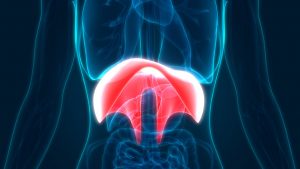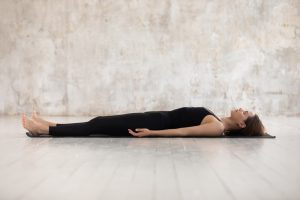
It’s so difficult not to feel stressed. There is so much uncertainty. So much we cannot control.
But you can control your breathing. Try to take a moment today, slow down a little, relax a little, take in all the little things in your life that make you smile. Be grateful, gracious and breathe.
How you breathe impacts your entire body, mind and emotions. Hard, fast breathing impacts heart rate and your nervous system – ensuing adequate blood flow and innervation of your muscles to facilitate awesome athletic performance and feats of power. That fight or flight response that makes wee people like us into super heros for moments. Even hours.
But we don’t always want to be in that overly or even slightly stressed state. And, once again, how we breathe impacts our ability to truly relax and restore.
The ribcage, abdomen and diaphragm work together to move air in and out of your lungs. When you inhale, your brain signals your diaphragm to contract. The lungs sit on top of and are attached to the diaphragm, so as the diaphragm descends – on inhale – it pulls the lungs down, stretching them and creating space. This allows the outside air to rush in. At the same time – remember the diaphragm descends or move down when it contracts – the organs and fluid in the abdominal cavity are pushed down causing the belly to gently bulge. When the breath is complete the brain stops signaling the diaphragm to contract, the muscle relaxes, and the tissue spring back to their original position forcing air out of the lungs and creating an exhalation.

In diaphragmatic breathing, at the beginning of your inhalation, you gently contract your superficial abdominal muscles. This creates a slight brace, preventing the belly from puffing too much, and encouraging the lower border of the ribcage to lift and swing outwards. The base of lungs expand from side to side and front to back instead of only moving downwards. Complete exhalation is facilitated by completely relaxing the diaphragm. The lower ribs are no longer being pulled upon and can descend and move towards the midline of your body. You are in effect emptying the lungs by moving the lower ribs “down and in” which will make extra room for fresh air on your next inhalation.

- Lie on your back.
- Place a pillow under your knees if this makes you more comfortable.
- Relax your neck, chest and shoulders.
- Breathe in through your nose and out through your mouth, making a gentle “HA” sound as you exhale.
- Progress to exhaling through your nose, maintaining the same shape in the back of your throat as you did when you were saying “HA”
- Lie your palms on the lower part of your ribcage so the tips of your middle fingers touch at the end of each exhalation about 2 inches below your sternum
- As you begin to inhale, gently tighten your outer abdominal muscles.
- Continue to inhale keeping the belly relatively stable, encouraging instead your diaphragm to spread your lower ribs swing up and apart so the tips of your fingers separate.
- As you exhale, again keep the belly stable.
- Encourage the ribs to move down and in by relaxing the diaphragm.
- On each exhale, try releasing a little extra air. Avoid forcing the movement, rather consciously try to relax the diaphragm and swing the ribs further down and in.
Meg’s Tip: I like taking this time to enjoy a little classical piano when I practice my breathing. After 3-4 minutes, I move into my mobility work and find the mindful breathing makes these exercises so much more effective.
Inspiration of the Day:

“Breathe. Let go. And remind yourself that this very moment is the only one you know you have for sure.” – Oprah Winfrey

